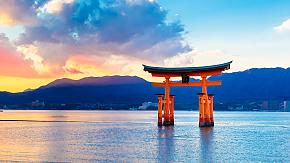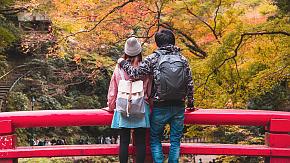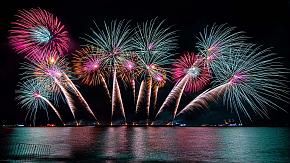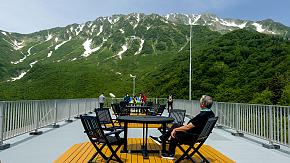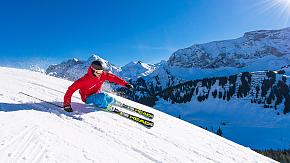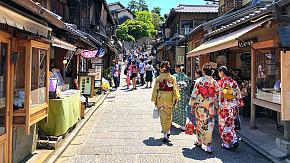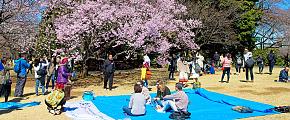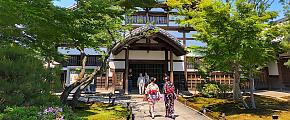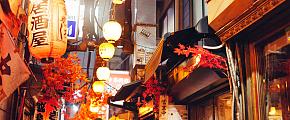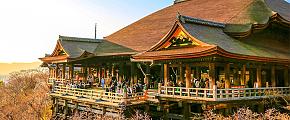12 Best Japanese Festivals in 2026: Top Matsuri Celebrations
From the chic cherry blossom festivals that herald the warmth of spring to the snow and ice events that capture the magic of winter, Japan's festive celebrations offer something special year-round. Obon comes alive with grand bonfires, while the summer matsuri brings dazzling fireworks displays. These vibrant festivals and events are key to making your Japan tour truly unique. Explore Japan's best festivals below for more inspiration.
Sapporo Snow Festival
- Date: 4th to 11th February 2026
- Location: Odori Park, Tsudome & Susukino in Sapporo, Hokkaido
Also known as the Sapporo Ice Festival, this winter celebration is one of Japan's best festivals, featuring vivid ice and snow sculptures of all sizes and shapes that line the streets and fill the grounds. It's a true winter wonderland, also offering outdoor snow activities to add to the fun.
The sculptures range from life-sized replicas of buildings and castles you can even climb, to beloved characters from anime, manga, and video games. The Sapporo Snow Festival takes on a different charm at night when the sculptures are illuminated, creating a magical atmosphere. Be sure to leave enough memory on your camera before sightseeing in Hokkaido to capture this stunning visual feast!
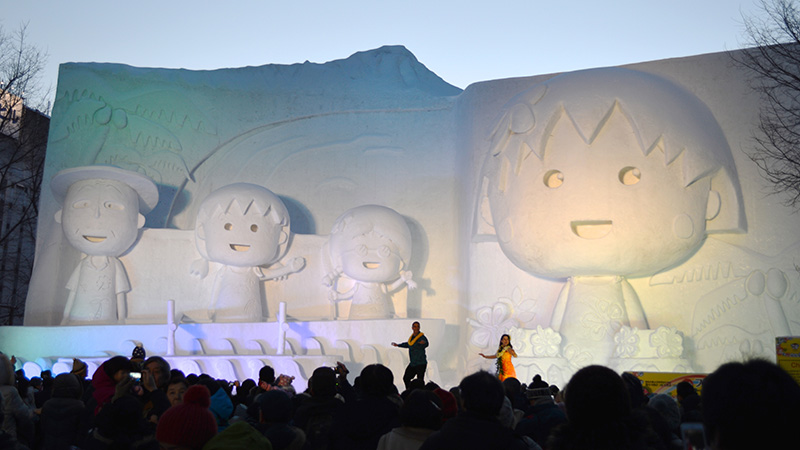 Sapporo Snow Festival
Sapporo Snow Festival
Obon Festival & Gozan no Okuribi
- Date: 13th to 16th August 2026
- Location: Tokyo, Kyoto, Osaka
Obon is one of Japan's most important festivals, centered around family reunions and honoring ancestors. During your summer journey, you can see families gather to make cucumber horses to guide spirits home and set water lanterns afloat on rivers, giving Obon its nickname as Japan's Ghost Festival.
However, this festival is far from somber - following the ceremonies, celebrations abound. People dance in circles to the beat of taiko drums, with locals dressed in traditional yukata enjoying the festive atmosphere. If you're in Kyoto, don't miss the spectacular Gozan no Okuribi, where five grand bonfires illuminate the night sky, each blazing with enormous Japanese characters as a final farewell to the spirits.
Please note that celebration dates can vary by region, with some taking place as early as July and others as late as September. Simply let Odynovo know your preferences and requirements and we'll create the perfect itinerary for you.
Awa Dance Festival
- Date: 12th to 15th August 2026
- Location: Tokushima, Shikoku
Part of the Obon Festival celebrations, Awa Odori is Japan's largest dance festival, alive with the sounds of shamisen lutes and taiko drums. Thousands of dancers fill the streets to perform the famous "Fool's Dance", reminiscent of a carnival in Rio de Janeiro.
This 400-year-old celebration retains its vibrant party spirit, with performances and dances throughout the day and night. Apart from food and game stalls bustling the streets, you'll see dancers in their iconic triangular hats and bright yukata or happi, moving rhythmically to lively music. The night performances are particularly exciting and energetic, so be sure to arrive early to get a good seat.
Another great piece of news is that even if you miss the August summer festival, the Awa Odori Kaikan in the city center provides a year-round opportunity to experience this special dance for yourself.
Tanabata Festival, Sendai
- Date: 6th to 8th August 2026
- Location: Sendai, Miyagi
Tanabata, or the Star Festival, is a beloved national celebration in Japan, with Sendai's Tanabata Matsuri being the most famous, featuring vibrant streamers and countless festive decorations.
Tanabata is a festival of love, marking the reunion of the star-crossed couple Orihime and Hikoboshi. If you're traveling with a loved one or planning a honeymoon vacation, don't miss the chance to enjoy this romantic celebration together.
Wear a traditional yukata to join the grand parades, stroll beneath the bamboo decorations, explore food stalls for seasonal treats, and take part in the Tanabata tradition of writing your wishes on tanzaku paper and hanging them on bamboo.
Aomori Nebuta Festival
- Date: 2nd to 7th August 2026
- Location: Yanakawa, Aomori
The Nebuta Matsuri is one of Tohoku's most renowned summer festivals, featuring vibrant, warrior-shaped Nebuta lantern floats that fill the streets with incredible color and energy. These massive lanterns are crafted from painted washi paper over a wire frame and depict iconic historical characters from popular media, as well as mythological figures and deities from Japanese culture.
Over the five-day festival, the Nebuta floats parade through the city, accompanied by powerful taiko drums, musicians, and dancers who chant "Rassera!" to invite everyone to join in the festivities. The celebration concludes with a spectacular fireworks display, traditionally followed by releasing the Nebuta lanterns into rivers or sea - a symbolic gesture to cleanse away sins and pray for health in the coming year.
Sanja Matsuri
- Date: 15th to 17th May 2026 (the third weekend of May)
- Location: Sensoji, Asakusa, Taito City, Tokyo
Known as one of the most vibrant and largest festivals in Japan, Sanja Matsuri is a popular three-day Shinto festival in which around 100 mikoshi (portable shrines) are paraded through the streets to spread good fortune.
The festivities begin on Friday afternoon, so arrive at the Sensoji as early as possible to catch the opening ceremonies, with traditional dancing, prayers, and the first shrine processions. On the second day, more mikoshi of various shapes are displayed, adding to the energy of the celebrations. For the liveliest experience, don't miss the final day, when participants compete to carry the three main shrines - an exhilarating tradition for those hoping to take some good luck home.
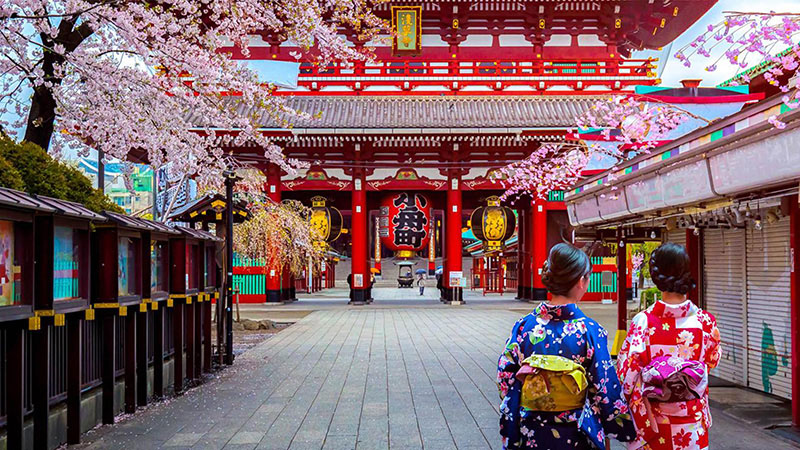 Senso-ji, Tokyo
Senso-ji, Tokyo
Gion Matsuri
- Date: 1st to 31st July 2026 (highlight in 17th & 24th July)
- Location: Yasaka Shrine, Gion, Kyoto
As one of the most celebrated festivals in Japan, Gion Matsuri takes place throughout the entire month of July, culminating in the grand float procession, Yamaboko Junko, on the 17th. These floats, standing about 25 meters tall and weighing 12 tons, are elaborately decorated and carry the sacred child as they parade through the district.
While the processions occur during the day, the Kamo River comes alive at night, illuminated by neon lights and bustling with food and drink vendors. If you visit Gion in early July, you can witness the assembly of the massive floats, which are constructed without the use of nails. After the display, some floats may even allow you to enter for the up closer sightseeing.
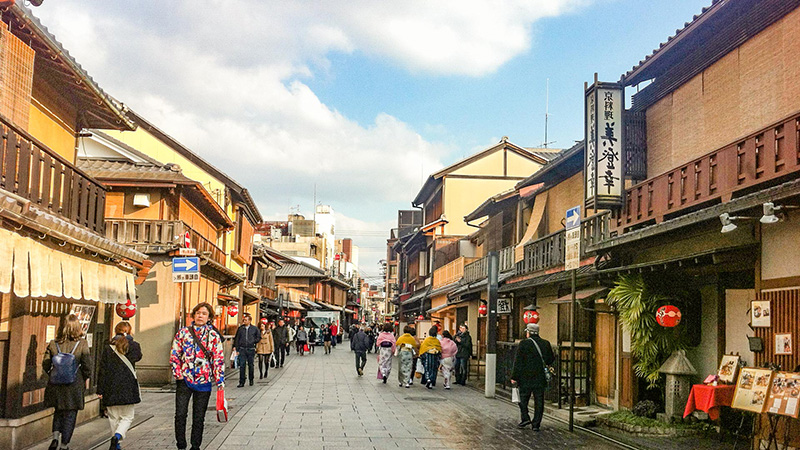 Gion, Kyoto
Gion, Kyoto
Takayama Festival
- Date: 14th to 15th April & 9th to 10th October
- Location: Takayama, Gifu
Set in the Japanese Alps, the Takayama Festival consists of two parts, the Sanno Festival in the spring and the Hachiman Festival in the autumn. The springtime Sanno Matsuri offers a great time to view cherry blossoms in full bloom. Locals pray for a good harvest at the Hie Shrine. Likewise, the autumn Hachiman Matsuri at the Hachiman Shrine is about a thanksgiving ceremony.
Takayama Matsuri is known for the festive float event, in which four large ornate floats parade through the Edo-era streets, as well as the night event, illuminated by 100 lanterns. There is also a Karakuri doll (mechanized puppet) performance for entertainment, as well as portable shrine parades around the historic town.
Izumo Taisha Kamiari Festival
- Date: 11th to 17th November 2025
- Location: Izumo Taisha, Izumo, Shimane
Rich in myth and religious history, the Izumo Taisha Kamiari Festival is a significant event for Japan's eight million gods. In the Japanese lunar calendar, the 10th month is known as Kannazuki (the Month without God), while in Izumo, it is referred to as Kamiarizuki (the Month with God), when the gods gather there for their celebrations.
The festival begins at Inasa Beach after sunset with a welcoming ceremony for the gods, featuring lit bonfires and a long procession to guide them. Over the next seven days, various rituals are held to entertain the gods, including kagura dances throughout the week. During this time, the streets and residents maintain a respectful quiet. It's advisable to arrive at the beach before 7 PM on the first night to witness the lighting of the fire.
New Year's Day at Ise Shrine
- Date: 31st December 2025 to 1st January 2026
- Location: Ise Jingu, Ise, Mie
Hatsumode is a key tradition on New Year's Day in Japan when families gather at a nearby temple or shrine to pray for a prosperous start to the year. The most famous destination for this festival is the Ise Shrine (or Ise Jingu), regarded as the most important Shinto shrine and has been the home of the Imperial Family's ancestral deity for nearly 2,000 years.
On New Year's Day, the shrine and surrounding streets are filled with festive decorations and food stalls offering hot dogs, yakitori, and yakisoba, creating a lively atmosphere. Millions of visitors come to experience the opportunity to connect with the resident deity. A visit to the Ise Shrine typically begins at the outer sanctum and proceeds to the inner sanctum, starting with ritual purification by washing hands at the purification trough to cleanse oneself before approaching the deity.
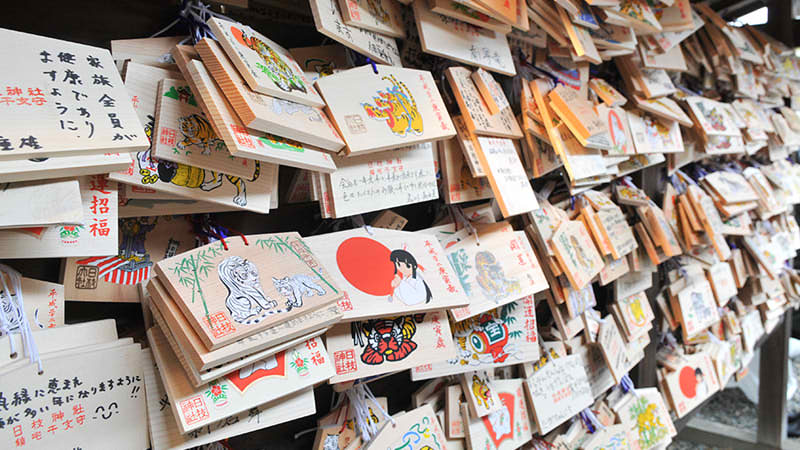 Ema for New Year's Wishes
Ema for New Year's Wishes
Chichibu Night Festival
- Date: 2nd to 3rd December 2025/2026
- Location: Chichibu Shrine, Chichibu, Saitama
The Chichibu Yomatsuri is a grand night festival in Japan that dates back to the Edo period. This celebration features captivating performances at the shrine and a spectacular fireworks display at night, with vibrant paper lanterns swaying on floats against the backdrop of the illuminated sky. Kabuki is also performed inside the floats.
The festival showcases four stunning Yatai floats and two Yasaboko floats, each adorned with intricate gold decorations and distinct carvings. These floats parade through the city, accompanied by the rhythmic sounds of taiko drums, bells, and flutes. Street vendors sell a variety of festive foods along both sides of the streets. Given the festival's popularity, it's advisable to arrive early at the plaza in front of city hall for the best viewing spots.
Kishiwada Danjiri Festival
- Date: 13th to 14th September 2026
- Location: Kishiwada, Osaka
After about a year of preparing the floats, the Danjiri Matsuri unites groups from 34 neighborhoods in Kishiwada to compete in manually pulling a 4-ton danjiri (wooden cart) through the streets.
The stars of the event are the Daiku-gata (carpenters), who perform traditional dances on top of the cart while balancing on the roof of the float, especially challenging as they navigate sharp corners and narrow intersections.
The rhythmic drumming and flute melodies blend with the chants of the cart pullers and the buzz of the crowd, creating an electrifying atmosphere that attracts visitors from both Japan and abroad. A popular viewing spot is directly in front of the Kispa La Park department store, where you enjoy local food and the best festival atmosphere.
Enjoy Japan's Best Festivals With Odynovo
Festivals in Japan are focusing on games, parades, dance, food, even some unique unusual festivals, all-around entertainment. Places vary from temples, and shrines to parks. There is never a lack of events taking place in this vibrant country. If you're planning to travel to Japan and want to experience the local culture with the best festivals, please don't hesitate to contact Odynovo at [email protected] for your tailor-made itinerary.
What Our Clients Say
Explore the latest verified reviews of Odynovo's travel services on Tripadvisor, Google, Trustpilot, Product Review and more trusted platforms.

